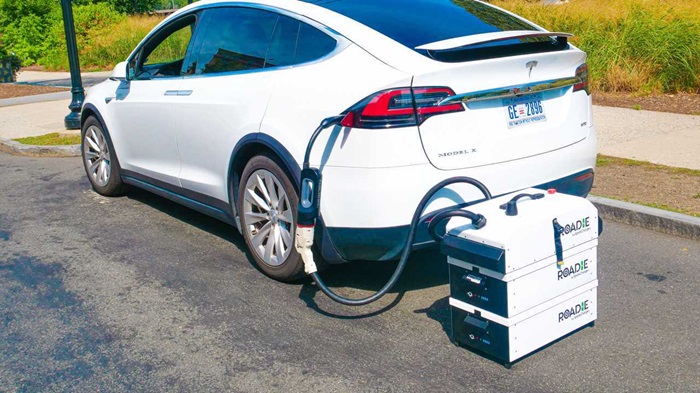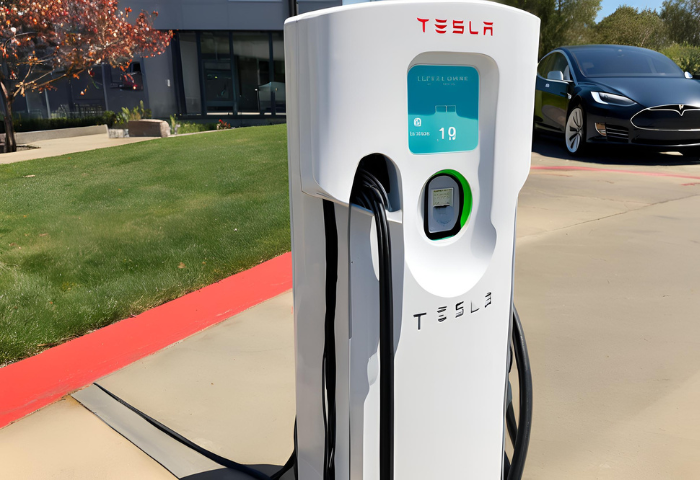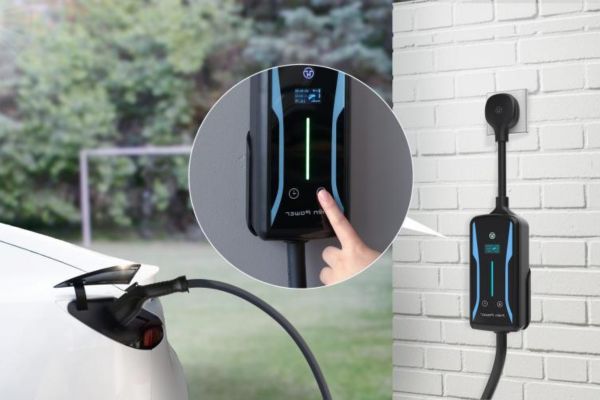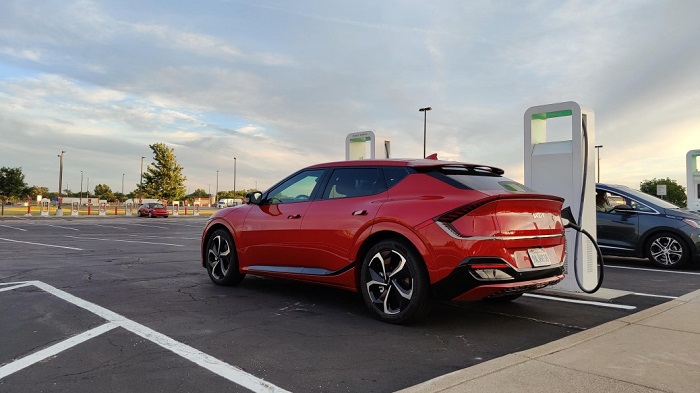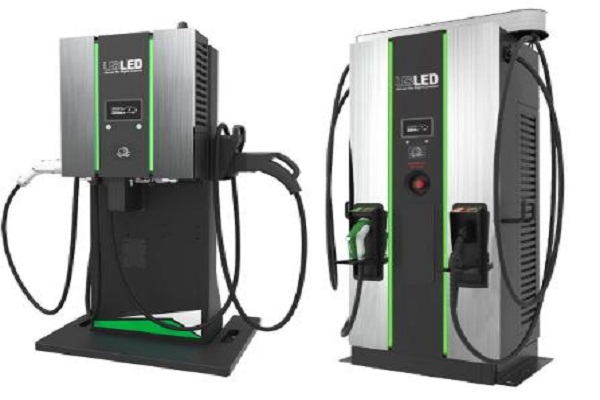Portable Electric Car Chargers: Powering the Future of EV Convenience
As the electric vehicle (EV) market continues its rapid expansion, the need for convenient and accessible charging solutions is paramount. Portable electric car chargers have emerged as a game-changer, offering EV owners unparalleled flexibility and peace of mind.
These compact and lightweight devices allow for charging on the go, eliminating range anxiety and dependence on public charging stations. Their simple plug-and-play functionality makes them easy to use, while their compatibility with various outlets ensures versatility.
Whether at home, on a road trip, or exploring new destinations, portable chargers empower EV owners to charge their vehicles virtually anywhere, further accelerating the widespread adoption of sustainable electric mobility.
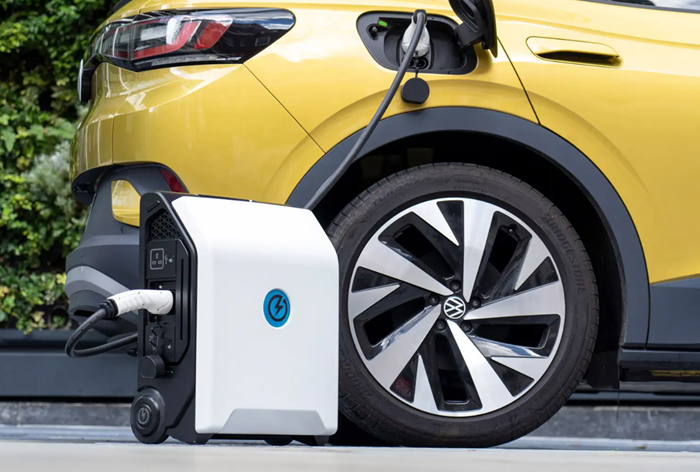
Understanding Portable Electric Car Chargers
A portable electric car charger is a device designed to provide electricity to charge electric vehicles (EVs) when you’re away from a fixed charging station or your home charging setup. They’re essentially compact and convenient charging solutions that you can carry with you, making them ideal for on-the-go charging needs.
Here’s a breakdown of their design and how they differ from fixed charging stations:
- Portability: The key feature of a portable electric car charger is, of course, its portability. They are typically smaller and lighter than fixed charging stations, making them easy to carry in your car’s trunk or storage compartment. This portability allows EV owners to charge their vehicles wherever there’s a compatible power source available.
- Plug Compatibility: Portable electric car chargers come with different plug types to accommodate various types of power outlets. They often include adapters for standard household outlets, as well as options for higher voltage outlets like those found in RV parks or industrial settings.
- Power Output: While portable chargers can vary in their power output, they are generally designed for slower charging compared to fixed charging stations. This means they might take longer to fully charge your vehicle’s battery, but they are still effective for topping up your EV’s battery while you’re out and about.
- Safety Features: Like fixed charging stations, portable electric car chargers are equipped with safety features to protect both the vehicle and the charging equipment. These features may include overcurrent protection, overvoltage protection, and temperature monitoring to prevent overheating.

Detailed Features and Specifications
The Roadie Portable charger is an example of a portable electric car charger designed to provide convenient charging solutions for electric vehicle (EV) owners on the go.
Technical Specifications:
- Battery Capacity: Measured in kilowatt-hours (kWh), this determines the total amount of energy the charger can store. The Roadie Portable’s capacity will influence how much additional range you can add to your EV with a single charge.
- Output Range: This refers to the amount of power (kW) the charger can deliver to your car’s battery. Higher output translates to faster charging times. Look for Roadie Portable’s specific output range to understand its charging speed capabilities.
Charger Types: Portable chargers typically offer two options
- Level 1 Charging: Uses a standard household outlet (120V) for slower but more convenient charging.
- Level 2 Charging: Utilizes a 240V outlet (like a dryer outlet) for significantly faster charging times. Confirm which charging types the Roadie Portable supports.
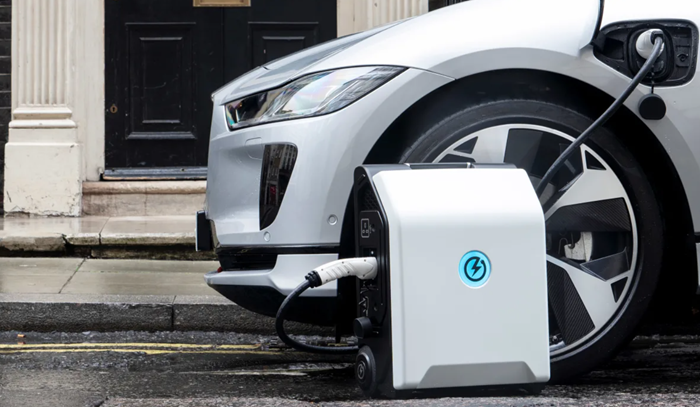
Benefits of Advanced Features:
Modular Batteries: Some chargers, like the Roadie Portable (depending on the specific model), might offer modular battery packs. This allows you to customize the total battery capacity by adding or removing modules. This caters to various needs: a single module for occasional top-ups or multiple modules for longer trips.
Customizable Packages: The ability to choose your desired battery capacity and charging output through package options provides flexibility. You can pick a configuration that best suits your budget and typical charging needs.
Advantages of Roadie Portable
Analyze the battery capacity and output range offered by Roadie Portable to understand its range-extending capabilities and charging speed.
If Roadie Portable offers modular batteries and customizable packages, highlight the convenience and cost-effectiveness of tailoring the charger to your specific needs.
Note: Specific details on the Roadie Portable may vary depending on the model. Consider searching online for the latest specifications.

User Testimonials and Reports
The review is based on feedback and popular experiences shared by various car charger users up to my most recent training data as of January 2022.
Common Praises:
- Portability: Users often appreciate the compact and lightweight design of portable chargers, making them easy to carry and store in their vehicles.
- Ease of Use: Plug-and-play functionality necessitates little setup, making portable chargers easy to use for many users.
- Versatility: Some chargers support multiple charging standards, allowing users to charge different types of electric vehicles. EV owners who own multiple models or frequently use public charging stations value this versatility in particular.
- Convenience: Portable chargers offer convenience, enabling users to charge their electric vehicles at home, work, or on the go, reducing reliance on public charging infrastructure.
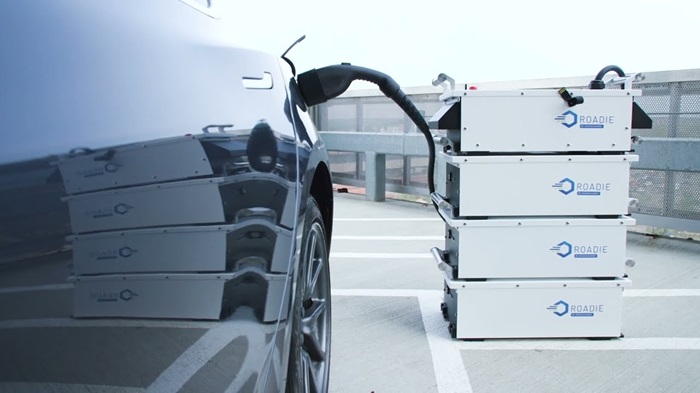
Common Concerns:
Charging Speed (Level 1): Level 1 charging is significantly slower than Level 2 or DC fast chargers, adding hours to charging time.
Bulk and Weight: Some high-powered chargers can be bulky and heavy, making them less convenient to carry around.
Compatibility: Double-check compatibility with your car’s charging port to avoid any fit issues.
Limited Range: The limited power output of portable chargers may limit their usefulness for long-distance travel or rapid charging needs. Users may need to plan their journeys carefully or rely on alternative charging options for extended trips.
Environmental Impact and Sustainability
Using portable electric car chargers can have several environmental benefits, primarily related to the reduction of carbon emissions and promoting sustainable manufacturing practices:
Reduced Carbon Emissions: By enabling electric vehicle (EV) owners to charge their vehicles using electricity from renewable sources, portable chargers contribute to reducing greenhouse gas emissions associated with transportation. EVs produce zero tailpipe emissions, and when charged with renewable energy sources such as solar or wind power, their overall carbon footprint is significantly lower compared to traditional gasoline-powered vehicles.
Promotion of Renewable Energy Adoption: Portable chargers allow you to take advantage of renewable energy sources like solar-powered charging stations, further reducing your environmental footprint. This shift towards renewable energy reduces dependence on fossil fuels and helps mitigate climate change by lowering overall carbon emissions from transportation.
Energy Efficiency: Portable chargers typically have high energy efficiency, minimizing energy losses during the charging process. This efficiency ensures that more of the electricity used to charge EVs is converted into usable energy, reducing overall energy consumption and associated environmental impacts.

Sustainable Manufacturing Practices: Many manufacturers of portable chargers are increasingly adopting sustainable manufacturing practices to minimize their environmental footprint. This includes using recycled materials, reducing energy consumption in production processes, and implementing eco-friendly packaging solutions. By supporting companies that prioritize sustainability, consumers contribute to driving positive environmental change throughout the product life cycle.
Extended Vehicle Range and Flexibility: Portable chargers provide EV owners with greater flexibility and peace of mind, knowing they have a reliable charging solution available wherever they go. This extended range can encourage more people to switch to electric vehicles, further reducing emissions from the transportation sector and improving air quality in urban areas.
Reduced Reliance on Fossil Fuels: By promoting the use of electricity as a transportation fuel, portable chargers help reduce reliance on fossil fuels such as gasoline and diesel. This diversification of energy sources contributes to energy security and resilience while decreasing the environmental and geopolitical risks associated with fossil fuel extraction and transportation.
Integration with Renewable Energy
Integrating portable electric car chargers with renewable energy sources like solar panels can significantly enhance environmental benefits and promote energy independence. Here’s how this integration can be achieved:
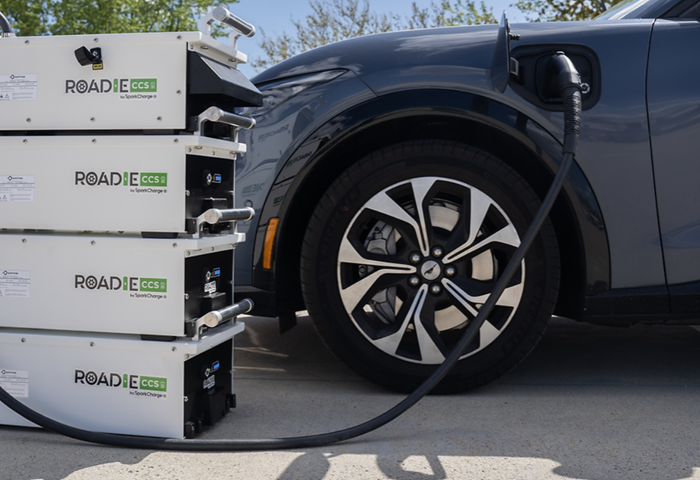
Solar-Powered Charging:
- Portable Solar Panels: While directly charging your EV with individual solar panels is impractical due to low power output, you can connect portable solar panels to a compatible solar generator. These solar generators store solar energy and can then be used to charge your EV through the portable charger’s standard AC outlet.
- Solar-Powered Charging Stations: A growing number of charging stations incorporate solar panels to offset their grid dependence. Look for stations with this feature, and use your portable charger to take advantage of this clean energy source.
Benefits:
- Reduced Reliance on Fossil Fuels: By utilizing solar power, you minimize the reliance on the traditional grid, potentially powered by fossil fuels. This significantly lowers the carbon footprint associated with charging your EV.
- Increased Energy Independence: Portable solar panels and solar charging stations offer greater control over your energy source, reducing dependence on the grid and potentially lowering electricity costs.
Considerations:
- Power Output: Portable solar panels typically have a lower power output (e.g., 100–200 watts). While helpful for topping up your battery, fully charging an EV with solar panels alone can take a very long time.
- Solar Irradiation: Solar panel efficiency depends on sunlight availability. Charging may be slower on cloudy days or in areas with less sunlight.
- Initial Investment: Portable solar panels and solar generators require an upfront investment. However, depending on your charging needs and frequency, this investment can be offset by long-term cost savings on electricity.
Safety and Regulatory Compliance
Safety standards and certifications for portable electric car chargers are crucial to ensuring their safe operation. Here’s an overview of some of the most important ones:

International Standards:
- IEC 62196: This standard sets guidelines for connector design, ensuring proper insulation, temperature tolerance, voltage rating, and mating compatibility. It’s particularly important for high-power DC fast chargers.
- CE Marking: The CE mark indicates compliance with European Union safety standards. It demonstrates that the charger meets the essential health, safety, and environmental protection requirements set out in EU directives.
- National Electrical Code (NEC): In the United States, compliance with the NEC is essential for electrical safety. Portable electric car chargers must adhere to relevant NEC requirements to ensure safe installation and operation.
- ISO (International Organization for Standardization) Standards: ISO standards may also apply, particularly ISO 15118, which addresses communication between electric vehicles and charging infrastructure for purposes such as authentication and billing.
Safety Features:
- Overcurrent Protection: This feature safeguards against surges or excessive current flow that could damage the charger or car.
- Ground Fault Circuit Interrupter (GFCI): A GFCI detects imbalances in electrical current and cuts power to prevent shock hazards, especially in cases of grounding issues.
- Thermal Management: Portable chargers generate heat during operation. Proper thermal management ensures the charger doesn’t overheat, reducing the fire risk.
- RoHS Compliance: RoHS (Restriction of Hazardous Substances) compliance ensures that the charger does not contain harmful substances such as lead, mercury, or cadmium, contributing to environmental safety.
- IP Rating: In environments where chargers may be exposed to water or dust, an IP (Ingress Protection) rating indicates the degree of protection against these elements. A higher IP rating signifies better protection.
In addition to the certifications mentioned above, chargers may bear safety agency marks from other organizations specific to certain regions, such as CSA (Canadian Standards Association) in Canada or CCC (China Compulsory Certification) in China.
Certification Bodies:
- UL (Underwriters Laboratories): UL certification signifies a product has undergone rigorous testing for safety, durability, and performance. Look for a UL listing specific to portable EV chargers.
- BSI Kitemark (British Standards Institution): Similar to UL certification, BSI’s Kitemark program involves testing against safety risks like electric shock, overheating, and mechanical hazards.
Additional Considerations:
ENERGY STAR: This certification signifies the charger meets energy efficiency standards, reducing energy consumption while in standby mode.
Advanced Technology and Functionality
The humble portable charger is no longer just a brick of backup juice. Let’s explore the exciting world of cutting-edge features and technological advancements transforming the way we keep our devices powered up:
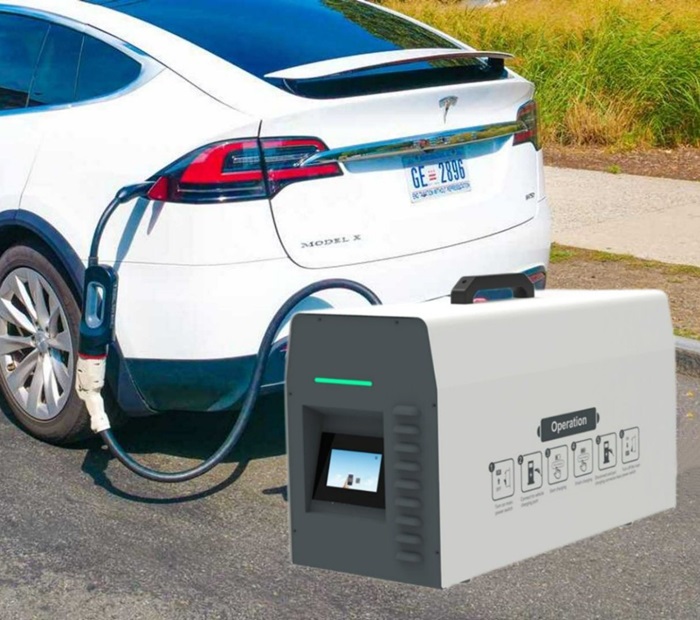
Smart Charging Takes Control:
- Adaptive Charging: Gone are the days of worrying about damaging your device with the wrong amperage. Smart chargers can automatically detect the type of device connected and adjust the charging current for optimal performance and battery health.
- Multi-Device Management: Juggling multiple devices? Some chargers offer dedicated ports with different outputs, allowing you to simultaneously charge a phone, tablet, and even a laptop efficiently.
- Priority Charging: Need to get your phone juiced up quickly before an important call? Some chargers allow you to prioritize a specific device, pushing it to full capacity faster while throttling back on others.
Tech on the Move:
- Wireless Charging Integration: Ditch the cables! Wireless charging-compatible chargers allow you to simply place your phone on the power bank for a convenient and cable-free top-up.
- Solar Charging Options: Eco-conscious users can rejoice! Solar-powered portable chargers harness the sun’s energy to refill their own batteries, offering a sustainable way to keep your devices going, especially during off-grid adventures.
- Pass-Through Charging: Need a power boost while your charger itself is plugged in? Pass-through charging allows you to simultaneously charge both your device and the power bank, eliminating downtime.
Smarter software, better performance:
- Firmware Updates: Just like your phone, some advanced chargers offer firmware updates that can improve charging efficiency, introduce new features, and even fix bugs. Look for manufacturers that provide easy ways to update your charger’s firmware.
- Digital Display: Never be left guessing about remaining power levels again. Digital displays provide real-time information on battery capacity, charging status, and even output voltage for added convenience.
These advancements are making portable chargers more versatile, user-friendly, and efficient than ever before.
Maintenance and Care
Maintaining and caring for portable electric car chargers is essential to ensuring their longevity and optimal performance. Here are some practical tips to help you keep your portable electric car charger in top condition:
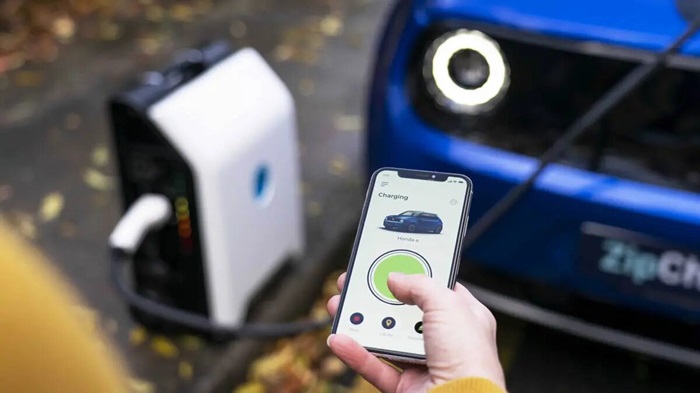
- Keep it Clean: Regularly clean the charger’s exterior with a soft, dry cloth to remove dust, dirt, and debris. Avoid using harsh chemicals or abrasive materials that could damage the charger’s surface.
- Protect from Moisture: Electric car chargers are electronic devices and should be protected from moisture and water. When not in use, store the charger in a dry and sheltered location, and avoid exposing it to rain or other sources of moisture.
- Inspect Cables and Connectors: Periodically inspect the charging cables and connectors for signs of wear, fraying, or damage. If you notice any issues, such as exposed wires or loose connectors, discontinue use and have the charger repaired or replaced by a qualified technician.
- Avoid overheating: Portable electric car chargers can generate heat during operation, especially during fast charging. To prevent overheating, avoid covering the charger or placing it in confined spaces while in use. Ensure adequate ventilation around the charger to dissipate heat effectively.
- Follow the manufacturer’s guidelines: Always refer to the manufacturer’s guidelines and instructions for proper use, maintenance, and storage of the portable electric car charger. Adhering to these recommendations will help prolong the lifespan of the charger and ensure safe operation.
- Store Properly: When not in use, store the portable electric car charger in a cool, dry place away from direct sunlight and extreme temperatures. Avoid storing the charger in the trunk of a car or in other areas where it may be exposed to temperature fluctuations and physical damage.
- Test Regularly: Periodically test the charger to ensure it is functioning correctly. This includes verifying that the charging cables, connectors, and display screens are working properly and that the charger can effectively charge your electric vehicle.
- Seek Professional Maintenance: If you encounter any issues or concerns with your portable electric car charger, seek assistance from a qualified electrician or technician. Attempting to repair or modify the charger yourself may void the warranty and could result in further damage or safety hazards.
Cost-Effectiveness and Market Trends of Portable Chargers
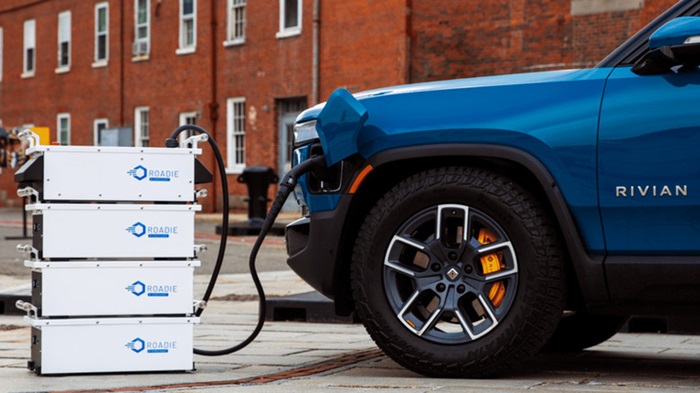
Cost Analysis of Portable Chargers
- Purchasing: Portable chargers come in a wide range of prices depending on capacity, features, and brand. Lower-capacity chargers can be very affordable (under $20), while high-capacity and fast-charging options can cost upwards of $100.
- Operating: Portable chargers are rechargeable batteries themselves. The ongoing cost is minimal, limited to the electricity used to recharge them, which is negligible compared to the device’s lifespan.
Factors Affecting Cost-Effectiveness
Frequency of Use: If you constantly need to recharge your devices, a higher-capacity charger will be more cost-effective in the long run compared to buying multiple lower-capacity ones.
- Charging Needs: Consider how many devices you need to charge and how quickly. Fast-charging capabilities come at a premium but can be valuable for time-sensitive situations.
- Lifespan: A high-quality charger with a longer lifespan will be more cost-effective than a cheaper one that needs frequent replacement.
Market Trends and Impact on Electric Vehicles (EVs)
Portable chargers have a complex relationship with the EV market.
- Indirect Boost: Portable chargers can indirectly promote EVs by addressing a common concern: “range anxiety.” Knowing you can recharge your phone on the go with a portable charger might make people more comfortable with the idea of an EV’s limited range compared to gas-powered vehicles.
- Limited Impact: However, portable chargers have a limited capacity and wouldn’t be a viable solution for recharging an EV battery. Dedicated charging infrastructure is still necessary to promote the use of EVs.
- Focus on Efficiency: The development of faster and more efficient portable chargers could benefit both the portable charger market and the EV market by pushing battery technology forward.
Portable electric car chargers offer a convenient and flexible solution for EV owners, particularly those without access to home charging or who frequently travel.
Overall, portable chargers play a significant role in advancing the usability and accessibility of electric vehicles. In the end, they help to promote the wider adoption of EVs and a more sustainable future by offering a useful solution for extending the infrastructure for charging EVs and reducing range anxiety.

Henry Michael is a leading expert in EV charging station research, specializing in innovative solutions for electric vehicle infrastructure. With a passion for sustainability and technological advancement, he is dedicated to advancing the accessibility and efficiency of EV charging worldwide.

